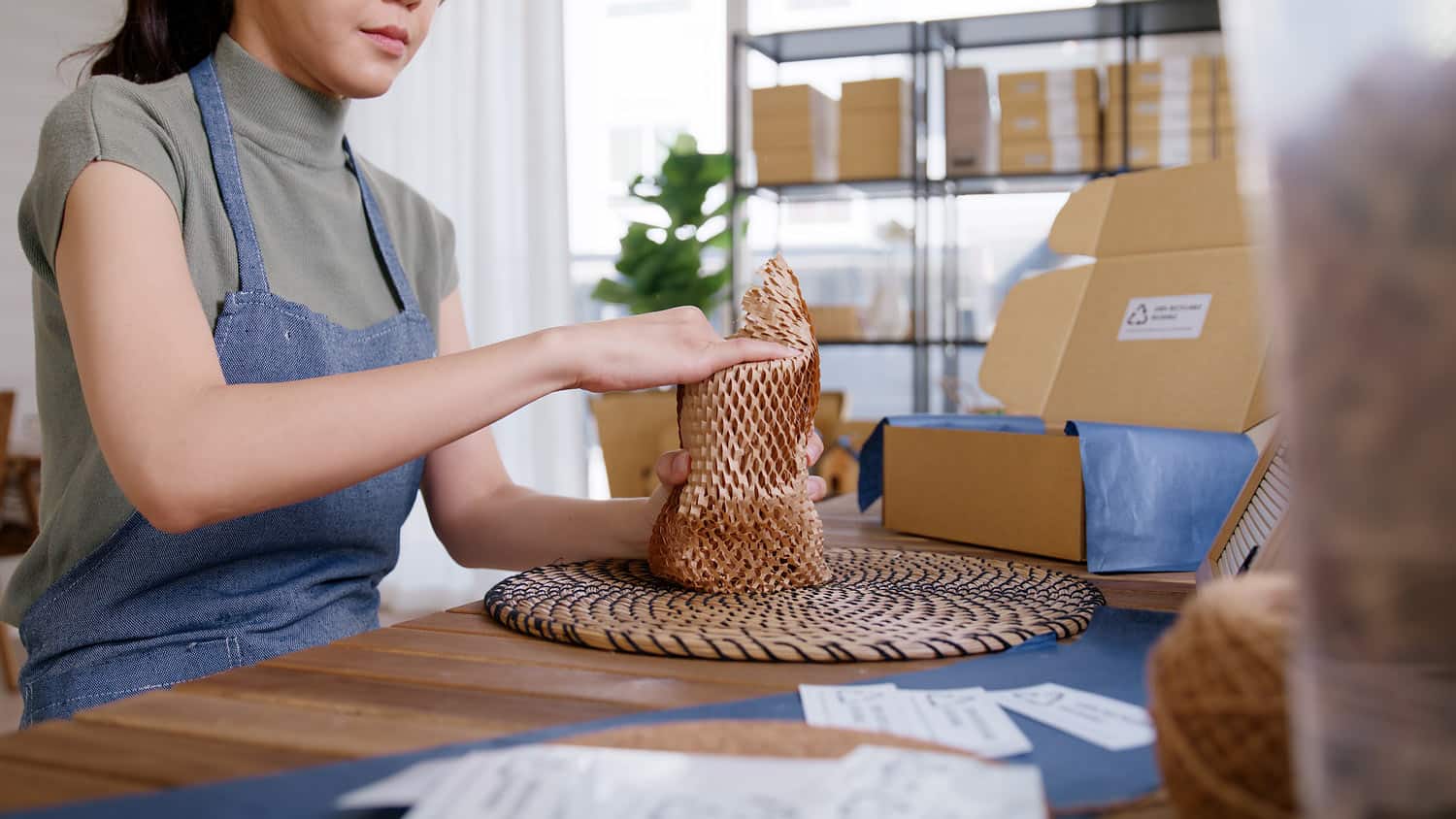Glassware Packing
Step 1: Preparing Packing Materials
Before you begin packing, gather all necessary materials:
Sturdy cardboard boxes – Choose thick, durable boxes that can withstand pressure.
Cushioning materials – Packing paper, bubble wrap, foam, honeycomb wrapping paper, or soft padding.
High-quality packing tape – Securely seals the box to prevent it from opening.
Fragile stickers – Ensures careful handling.
Corrugated cardboard – Can be used for additional reinforcement.
Old towels or clothes – Provides extra padding and absorbs shocks.
Dividers – Helps separate glassware inside the box.
Using high-quality packing materials is essential to prevent accidental breakage. If you are shipping fragile glassware, investing in premium packing supplies is recommended.
Step 2: Choosing the Right Boxes
Selecting an appropriately sized box for your glassware is crucial. If the box is too large, the items may shift and break during transportation. If it is too small, there may not be enough space for cushioning.
Tips for Choosing the Best Box:
Use reinforced, double-walled boxes for added protection.
Avoid old or damaged boxes that might tear easily.
Choose boxes with sectioned compartments if available to keep items separated.
Use smaller boxes for heavier glassware to make them easier to carry.
Step 3: Wrapping Glassware Properly
Each glass item should be individually wrapped to prevent friction and damage. The right wrapping technique depends on the type of glassware:
For Drinking Glasses & Mugs:
Stuff the interior of the glass with crumpled paper or a soft cloth for added support.
Wrap the glass completely with honeycomb wrapping paper, ensuring no part is exposed.
Secure the wrapping with packing tape to prevent it from unraveling.
For Plates & Bowls:
Place a cushioning layer between each plate or bowl using packing paper or bubble wrap.
Wrap the stack together using a large sheet of honeycomb wrapping paper.
Secure with tape or rubber bands to hold the wrapping in place.
For Wine Glasses & Stemware:
Wrap the stem first, as it is the most fragile part.
Cover the entire glass with multiple layers of wrapping.
Consider using a small box within a larger box for extra security.
Why Honeycomb Wrapping Paper?
Honeycomb wrapping paper is lightweight, flexible, and eco-friendly, offering excellent shock absorption while reducing waste from plastic bubble wrap.

Step 4: Arranging Items in the Box
After wrapping, arrange the glassware inside the box carefully:
Create a cushioned base using soft padding, foam, or crumpled paper.
Place heavier items at the bottom and lighter ones on top.
Keep plates vertical, not flat, to reduce pressure.
If the box is large, add dividers to keep items separate.
Fill any empty spaces with additional cushioning.
Best Practices for Arrangement:
Don’t overload the box – Overpacking can put pressure on fragile items.
Avoid stacking too many items – Place layers of padding between stacked items.
Keep items from touching – Even minor vibrations can cause breakage.
Step 5: Sealing and Labeling the Box
Once all items are securely placed:
Fill any remaining gaps with extra padding.
Close the box tightly using high-quality packing tape.
Add “Fragile” labels on all sides.
Mark “This Side Up” to indicate proper positioning.
For added security, reinforce the bottom of the box with extra layers of tape to prevent it from opening unexpectedly.
Step 6: Transporting the Box with Care
To ensure your glassware remains safe during transport:
Do not stack heavy boxes on top of fragile ones.
Handle with care – Avoid dropping or roughly placing the box.
Use a dolly or cart for large or heavy boxes.
Store boxes securely in a vehicle to prevent shifting during transit.
If sending through a shipping service, choose a provider that offers fragile-item handling and insurance in case of damage.
Additional Packing Tips for Maximum Protection
Double-box fragile items – Place the packed box inside a slightly larger box with padding.
Consider climate conditions – Avoid extreme temperatures that may affect delicate glass.
Test before sealing – Gently shake the box; if items shift, add more padding.
Label each box clearly – Include “Fragile” and “Handle with Care” labels.
Use plastic bins for storage – If packing for long-term storage, plastic bins offer better protection against moisture and pests.
Why Honeycomb Wrapping Paper is the Best Choice
Honeycomb wrapping paper is gaining popularity as an alternative to traditional plastic bubble wrap due to its numerous benefits:
Key Advantages:
✅ Eco-Friendly – Made from biodegradable materials, reducing environmental impact. ✅ Highly Protective – Absorbs shocks and vibrations effectively. ✅ Cost-Effective – Reduces the need for excessive packing materials. ✅ Easy to Use – Wraps glassware securely with minimal effort. ✅ Lightweight – Helps lower shipping costs.
By choosing honeycomb wrapping paper, you not only protect your glassware but also make an environmentally responsible choice.
Conclusion
Properly packing glassware is essential to prevent breakage and damage during transportation and storage. By following these steps and using high-quality materials like honeycomb wrapping paper, you can ensure your glassware arrives at its destination safely. Whether you are moving, shipping products, or storing valuable glassware, careful packing is the key to success.
Remember:
Always wrap glassware individually.
Use ample cushioning and strong boxes.
Label boxes as fragile to ensure careful handling.
Consider eco-friendly options like honeycomb wrapping paper for sustainable packing.
With these expert tips, your glassware will remain intact, protected, and ready for use whenever you need it!

